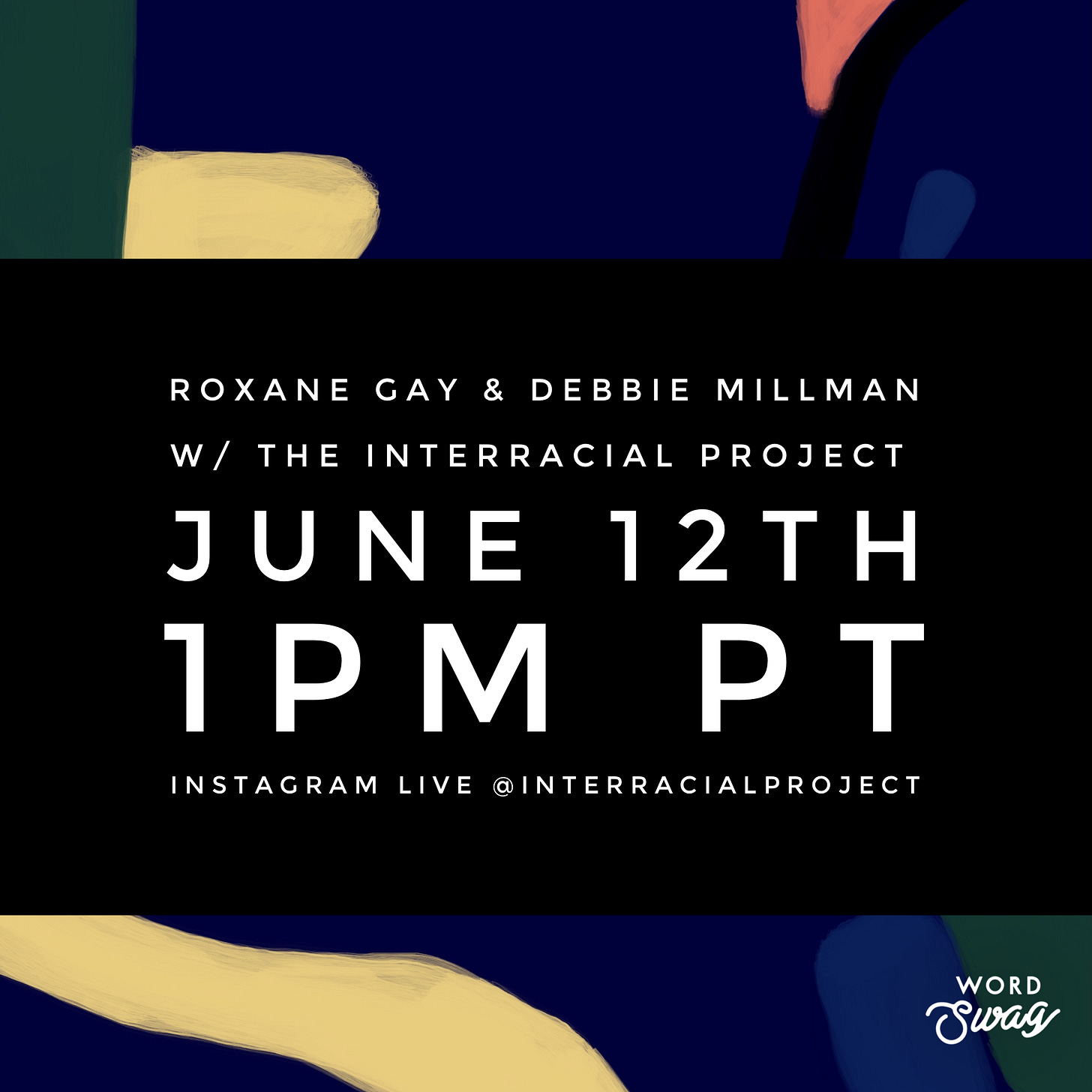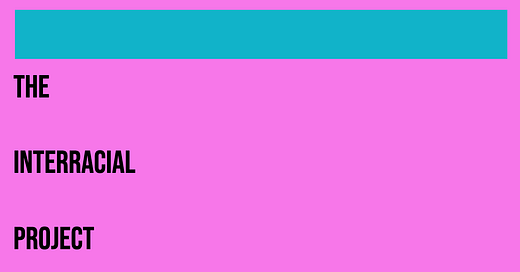The Interracial Project
On media and centering interracial narratives, and biracial and multiracial identity.

Intense heat blanketed Northern California this past week, both literally and metaphorically. Conversations about race and weather are familiar for our family—my 8-year-old daughter just completed a project on biomes, and I’d be lying if I didn’t say that last year during a field trip my daughter had to school her classmates on Black history when a classmate made a racist comment.
We live in a mixed race and mixed class sun-drenched suburban enclave—on our corner alone are Latinx, Black, and Japanese families. Some of us walk around in dreads and flip flops, others commute to their tech jobs, some sell food; one guy does professional graffiti in his garage, mostly of naked surfers. His neighbors are a Chinese father and Jewish mother raising their two biracial girls; the dad plays in an Eagles cover band and the mom was raised in San Francisco by a single mother who worked with the Black Panthers. I wrote an essay last year for The Bold Italic about our little neighborhood—about finding a sense of home in such an unexpected place.
Feeling a sense of place and at home in our bodies, our physical selves—these sensations carry weight, and their meaning is intertwined with our environments.
While my family has found new connection and relationship by transforming a decrepit balcony into a spacious sunlit haven, I know that the bodies of many of my Black brothers and sisters find no such safety.
One day on said balcony, I sat down in the heat with my husband and daughter and opened up with an idea. “What if we were to collaborate with other interracial families, where a new narrative would emerge—visually—about race and intimacy and belonging. A ‘third space’ as I’m calling it, about the tangible ways in which people come together—in love, and in the mundane, too.”
We chatted for a bit, and I let the ideas brew over a period of weeks, reaching out to fellow authors and creatives I thought may be interested. This was before the recent global uprising.
And then a revolution happened, right in front of our eyes, on video, repeatedly, escalating into worldwide protest, making this all seem ever more urgent.
We’re calling it The Interracial Project and Roxane Gay and her partner Debbie Millman join us this Friday June 12th 1pm PT for a live conversation on Instagram.
According to our Instagram bio, we’re a “Collaborative of journalists, writers, artists, filmmakers, educators & scientists centering interracial narratives of family & friendship in media.”
One of my coproducers is a Black father of two biracial children living just outside Minneapolis—he’ll be interviewing young adults about straddling biracial identity.
It’s a free, open, collaborative forum, we’d love for you to come, share your videos and photos with us, and please make a quick Instagram profile if you don’t already have one so that you can follow along.

Our goal is to continue the interviews we’ve been running and expand into more live video and art from interracial families and close friends. I love this Roxane Gay quote:
As a child I often imagined intimate circles of elders sharing about race and community. This dream was nurtured in college by my mentor Dr. Sandra Smith and more recently by my friend and collaborator Rev angel Kyodo williams. My parents were antiracists; these conversations are not new.
From my perspective, and because many of you know me from my work in psychology, health, journalism and neurodiversity, the topic of racial justice and racial healing is deeply intertwined with our own psyches, the stories we tell, the frames we hold, the imaginations we inhabit.
Engaging loved ones with whom we share our bodies and daily lives in interracial contexts is powerful. We may not see it that way, maybe we do, maybe we don’t think about it, but to the outside world it’s a statement.
It’s not depicted in pop culture or media. These stories aren’t told—in sitcoms, in advertisements, in Hollywood.
That’s why it feels like a “third space.”
Where we do dishes together, change our bedsheets together, nurse babies, go grocery shopping, kiss, visit in-laws, host parties, travel, take walks, provide care.
As interracial couples, our children are also living into something foreign to us, something new, inhabiting worlds that we did not know as kids. My daughter feels at home in Nepal and the Bay Area, for different reasons, and she notices racial depictions without skipping a beat. “She looks like me,” she’ll say, opening up a new book or coding game.
This past weekend a sudden cold front took over, literally rushing in with the wind, rustling leaves and branches waking us all up. While she’s been camping outside on our raised balcony, one night she awoke wanting to keep coding and drawing, but came inside to find warmth and rest in the night with us.
In my daughter I find a bridge, a deeper understanding of my husband, his culture, and what is required of each of us to find healing in relationship.
The Interracial Project will dive into all of these themes with writers, artists, facilitators, and more, exploring the wilds of love and heat and the mundane of fog and disconnection.
See you there, in that place, and I hope you’ll partake in the conversations, whether you are biracial or multiracial or single or not. Our culture needs healers, and learners.




